
How to Use AMS1117 3.3v: Examples, Pinouts, and Specs
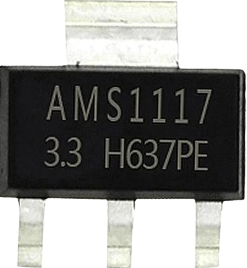
 Design with AMS1117 3.3v in Cirkit Designer
Design with AMS1117 3.3v in Cirkit DesignerAMS1117 3.3V Linear Voltage Regulator Documentation
1. Introduction
The AMS1117 3.3V is a low dropout (LDO) linear voltage regulator designed to provide a stable 3.3V output from a higher input voltage. It is widely used in power supply circuits for microcontrollers, sensors, and other electronic devices that require a reliable 3.3V power source. The AMS1117 3.3V is known for its simplicity, compact size, and integrated features such as overcurrent protection and thermal shutdown, making it a popular choice for both hobbyists and professionals.
Common Applications:
- Powering microcontrollers (e.g., Arduino, ESP8266, ESP32, etc.)
- Voltage regulation for sensors and modules
- Battery-powered devices
- General-purpose 3.3V power supply circuits
- Prototyping and breadboard projects
2. Technical Specifications
The AMS1117 3.3V is a three-terminal device with a simple pinout and robust performance. Below are its key technical details and pin configuration.
Key Technical Details:
| Parameter | Value |
|---|---|
| Output Voltage | 3.3V ± 1% |
| Input Voltage Range | 4.5V to 15V |
| Dropout Voltage | 1.1V (typical at 1A load) |
| Maximum Output Current | 1A |
| Quiescent Current | 5mA (typical) |
| Operating Temperature Range | -40°C to +125°C |
| Overcurrent Protection | Yes |
| Thermal Shutdown | Yes |
| Package Types | SOT-223, TO-252, and others |
Pin Configuration:
| Pin Number | Pin Name | Description |
|---|---|---|
| 1 | Input (VIN) | Connect to the input voltage (4.5V to 15V). |
| 2 | Ground (GND) | Connect to the ground of the circuit. |
| 3 | Output (VOUT) | Provides a regulated 3.3V output. |
3. Usage Instructions
How to Use the AMS1117 3.3V in a Circuit:
Input Voltage (VIN):
- Connect the input voltage (4.5V to 15V) to the VIN pin. Ensure the input voltage is at least 1.1V higher than the desired 3.3V output (i.e., minimum 4.4V).
Output Voltage (VOUT):
- The VOUT pin provides a stable 3.3V output. Connect this pin to the load or circuit requiring 3.3V.
Ground (GND):
- Connect the GND pin to the ground of the circuit.
Capacitors:
- For stable operation, connect a 10µF capacitor between the VIN pin and ground, and another 10µF capacitor between the VOUT pin and ground. These capacitors help filter noise and improve stability.
Heat Dissipation:
- If the AMS1117 is operating at high current (close to 1A) or with a large voltage difference between input and output, ensure proper heat dissipation. Use a heatsink or ensure adequate airflow to prevent overheating.
Example Circuit Diagram:
+--------------------+
| Input Voltage (VIN)|
| (4.5V to 15V) |
+--------------------+
|
|
[10µF] <-- Capacitor
|
|----> AMS1117 3.3V
| +---------+
+-------| VIN |
| |
+-------| VOUT |-----> Regulated 3.3V Output
| | |
[10µF] | GND |
| +---------+
|
GND
Important Considerations and Best Practices:
- Input Voltage: Ensure the input voltage is within the specified range (4.5V to 15V) and at least 1.1V higher than the output voltage.
- Capacitors: Always use the recommended capacitors for stable operation.
- Heat Management: Monitor the temperature of the AMS1117 during operation. Use a heatsink if necessary.
- Current Limit: Do not exceed the maximum output current of 1A to avoid damage.
4. Example Code for Arduino UNO
The AMS1117 3.3V is often used to power 3.3V devices like sensors or modules. Below is an example of using the AMS1117 to power a 3.3V sensor connected to an Arduino UNO.
Circuit Setup:
- Connect the AMS1117's VOUT to the sensor's power input.
- Connect the sensor's data pin to an Arduino UNO pin (e.g., A0).
Example Code:
// Example code to read data from a 3.3V sensor powered by AMS1117 3.3V
// Connect the sensor's data pin to Arduino pin A0
const int sensorPin = A0; // Analog pin connected to the sensor
int sensorValue = 0; // Variable to store the sensor reading
void setup() {
Serial.begin(9600); // Initialize serial communication at 9600 baud
}
void loop() {
// Read the analog value from the sensor
sensorValue = analogRead(sensorPin);
// Convert the analog value to a voltage (assuming 5V reference)
float voltage = sensorValue * (5.0 / 1023.0);
// Print the sensor value and voltage to the Serial Monitor
Serial.print("Sensor Value: ");
Serial.print(sensorValue);
Serial.print(" | Voltage: ");
Serial.println(voltage);
delay(1000); // Wait for 1 second before the next reading
}
5. Troubleshooting and FAQs
Common Issues and Solutions:
| Issue | Possible Cause | Solution |
|---|---|---|
| No output voltage | Input voltage is too low | Ensure input voltage is at least 4.5V. |
| Output voltage is unstable or noisy | Missing or incorrect capacitors | Add 10µF capacitors to VIN and VOUT. |
| AMS1117 overheating | Excessive current or poor heat dissipation | Reduce load current or add a heatsink. |
| Output voltage is not 3.3V | Incorrect wiring or damaged component | Verify connections and replace if needed. |
Frequently Asked Questions:
What is the maximum input voltage for the AMS1117 3.3V?
- The maximum input voltage is 15V. However, for optimal performance, keep it within 4.5V to 12V.
Can the AMS1117 power a 3.3V microcontroller?
- Yes, the AMS1117 is suitable for powering 3.3V microcontrollers like the ESP8266 or ESP32.
Why is the AMS1117 getting hot?
- The AMS1117 may overheat if the input voltage is too high, the load current is close to 1A, or there is insufficient heat dissipation. Use a heatsink or reduce the load.
Can I use the AMS1117 without capacitors?
- No, capacitors are essential for stable operation and to filter noise.
6. Conclusion
The AMS1117 3.3V is a versatile and reliable voltage regulator, ideal for powering 3.3V devices in a wide range of applications. By following the recommended usage instructions and best practices, you can ensure stable and efficient operation in your projects. Whether you're a beginner or an experienced user, the AMS1117 is a valuable addition to your electronics toolkit.
Explore Projects Built with AMS1117 3.3v
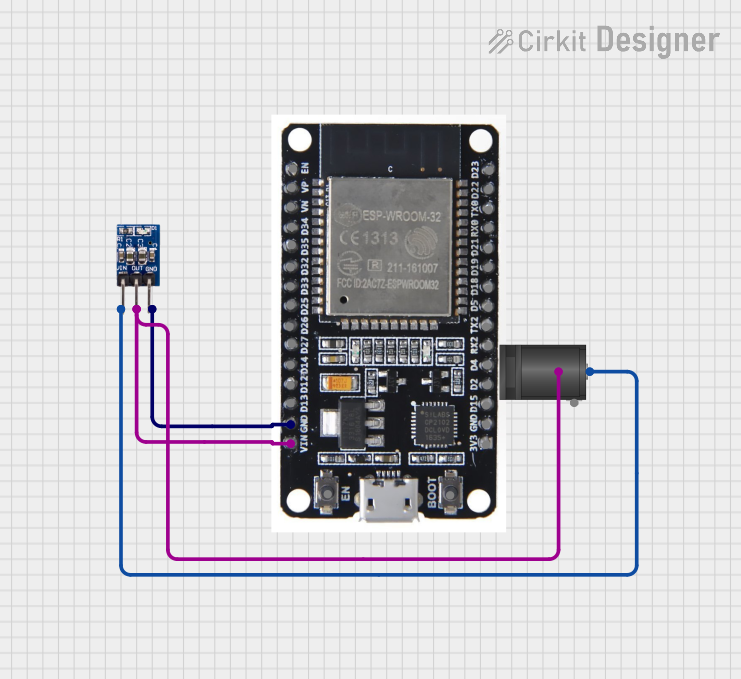
 Open Project in Cirkit Designer
Open Project in Cirkit Designer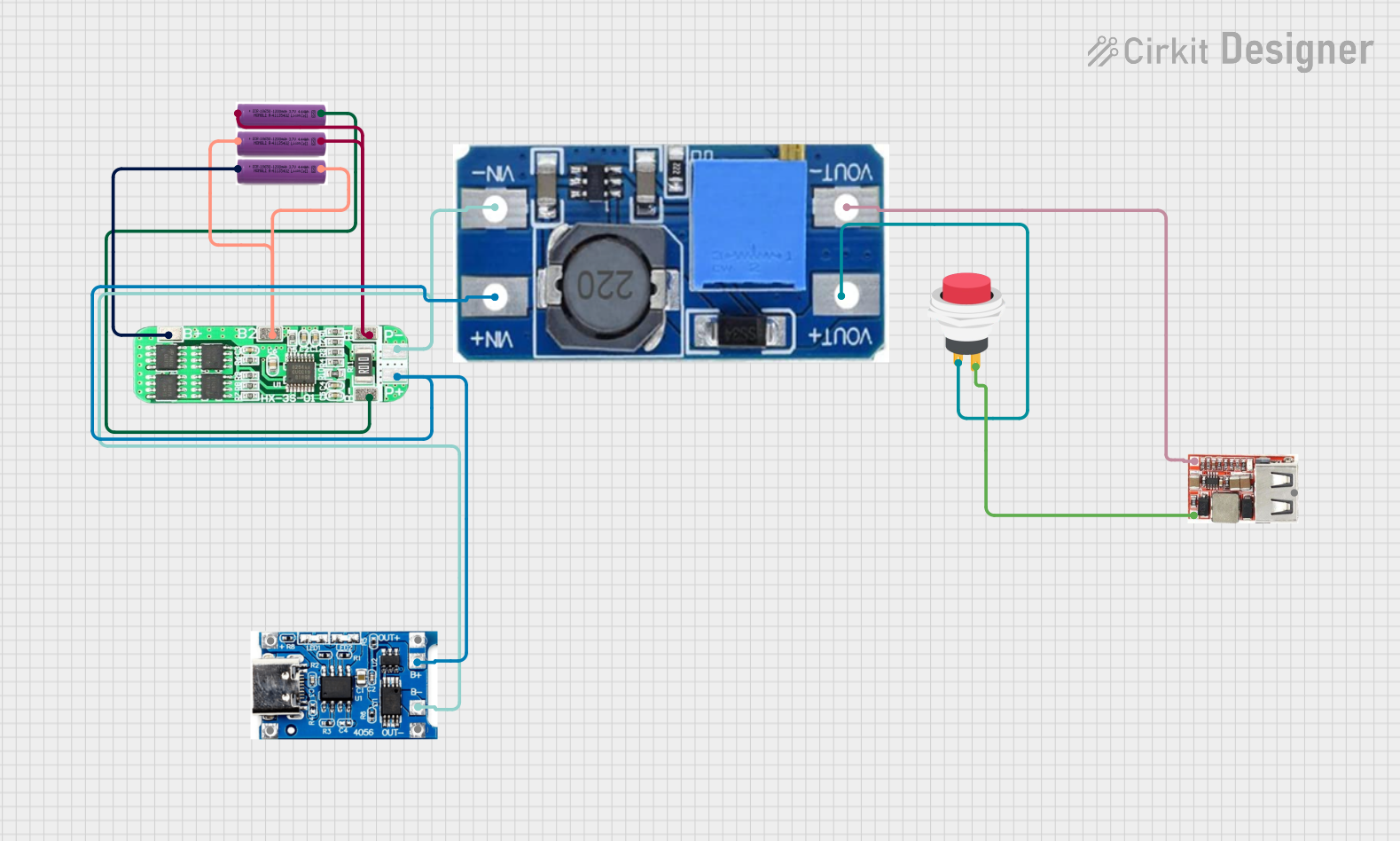
 Open Project in Cirkit Designer
Open Project in Cirkit Designer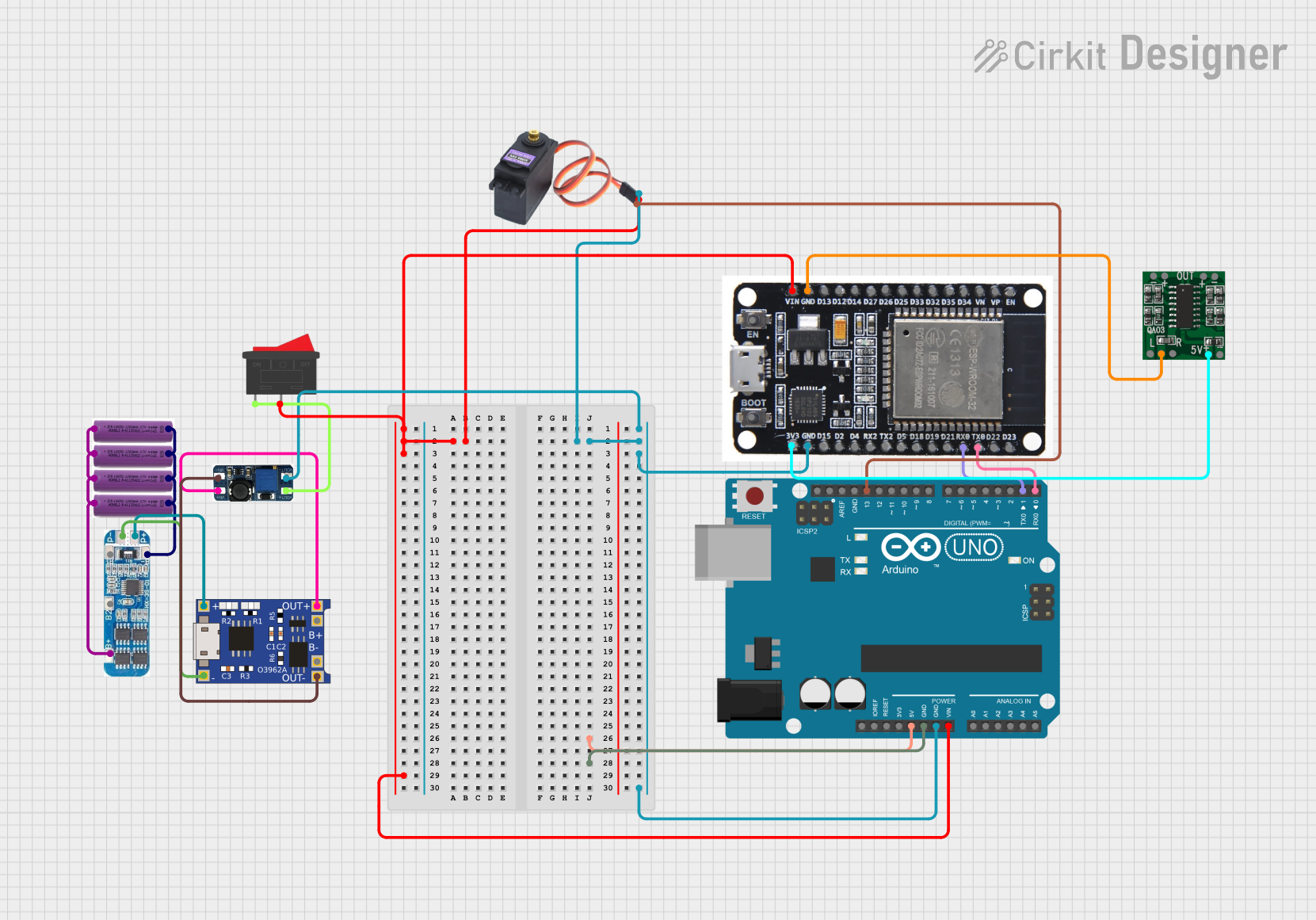
 Open Project in Cirkit Designer
Open Project in Cirkit Designer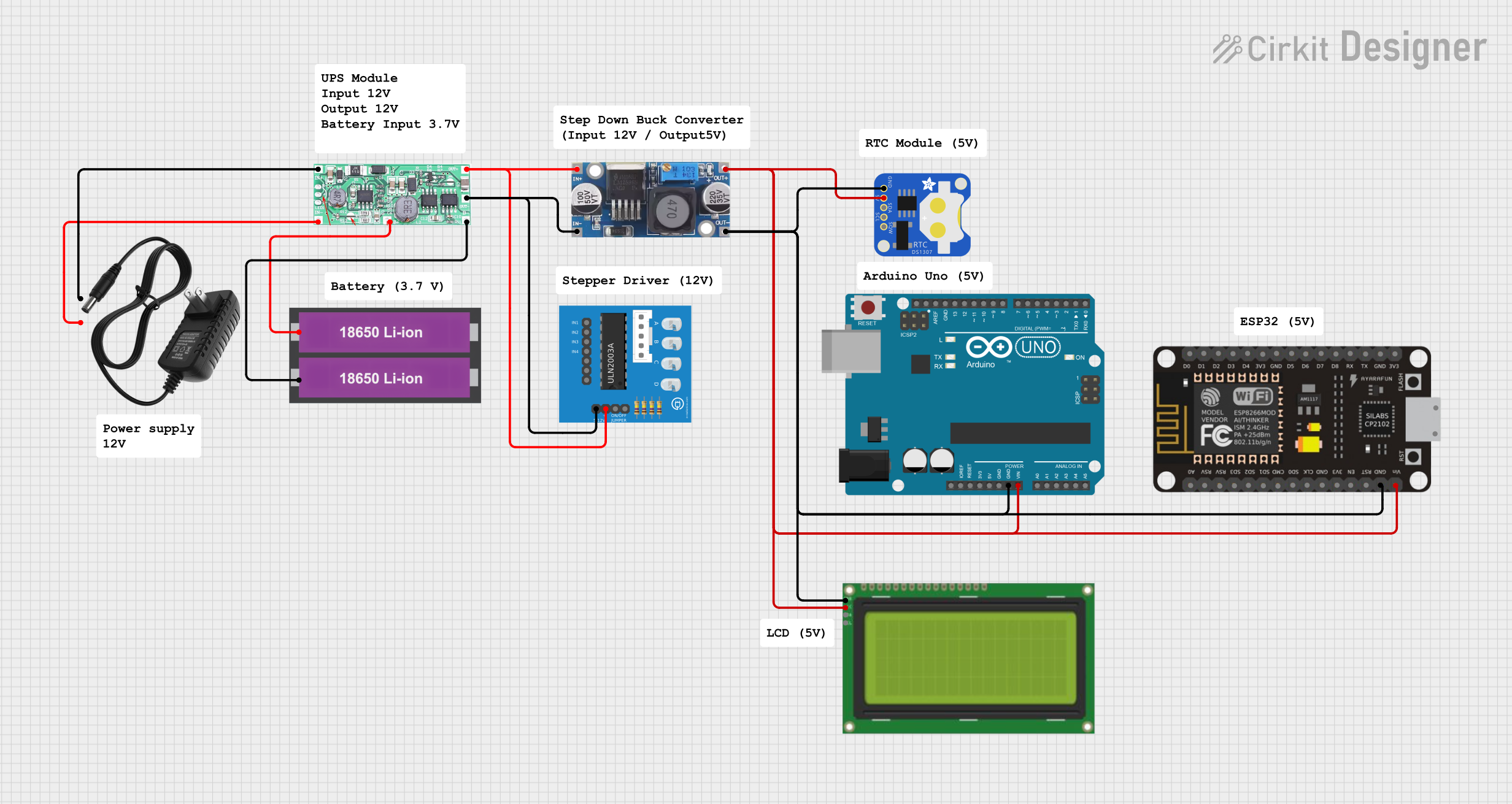
 Open Project in Cirkit Designer
Open Project in Cirkit DesignerExplore Projects Built with AMS1117 3.3v

 Open Project in Cirkit Designer
Open Project in Cirkit Designer
 Open Project in Cirkit Designer
Open Project in Cirkit Designer
 Open Project in Cirkit Designer
Open Project in Cirkit Designer
 Open Project in Cirkit Designer
Open Project in Cirkit Designer